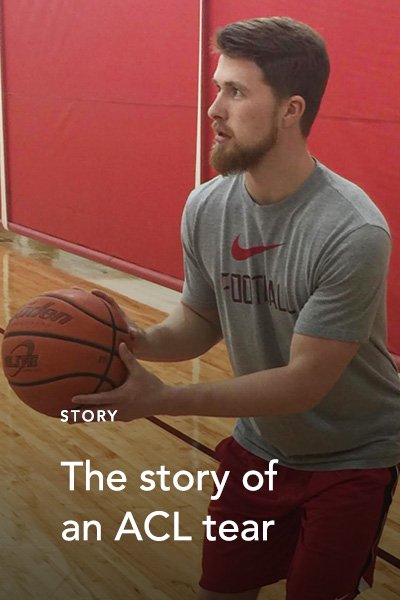Shoulder Reconstruction with a Distal Tibia Allograft
Learn more about shoulder reconstruction and schedule a consultation with Dr. Geoffrey Van Thiel
Introduction to Shoulder Reconstruction
Understanding and properly addressing irregularities in the osseous architecture of the glenohumeral joint are critical to the overall success of surgical treatment of glenohumeral instability. Following a traumatic anterior shoulder dislocation event, a concomitant glenoid rim fracture or attritional bone injury may compromise the static restraints of the glenohumeral joint, further perpetuating shoulder instability. Loss of the glenoid’s bony articular conformity significantly inhibit its ability to withstand shear stress.
Recognizing glenoid bone loss as a potential cause for failure in glenohumeral instability surgery has been recently emphasized by various authors calling attention to this often underappreciated problem. Principles of surgical management in shoulder reconstruction are guided by the extent of osseous injury to the glenoid, the surgeon’s personal experience with specific reconstructive techniques, and patient specific factors such as work and athletic demands. Both arthroscopic and open techniques have been described and there is a growing body of evidence to suggest that bony reconstruction of the glenoid is recommended if there is significant bone loss (usually >20-25%).
 For patients with significant bone defects, several autologous bone-grafting procedures, including the Latarjet (and modified Bristow) procedure as well as the use of iliac crest bone graft, have been described. Although long-term studies have demonstrated that such techniques result in stable and functional shoulders, arthritis continues to remain a concern. It is postulated that a nonanatomic repair of the glenoid arc, an extra-articular nonanatomic repair of capsulolabral tissues, and a lack of chondral surface reconstitution may in part explain the high incidence of degenerative disease after coracoid transfer. In a recent study, Ghodadra and authors showed that glenohumeral contact pressure is optimally restored with flush positioning of iliac or coracoid bone graft. Coracoid grafts that were placed proud significantly increased peak pressures within the joint and altered joint loading patterns—a finding that further supports the rationale for finding anatomic means for reconstruction of a congruous glenohumeral joint.
For patients with significant bone defects, several autologous bone-grafting procedures, including the Latarjet (and modified Bristow) procedure as well as the use of iliac crest bone graft, have been described. Although long-term studies have demonstrated that such techniques result in stable and functional shoulders, arthritis continues to remain a concern. It is postulated that a nonanatomic repair of the glenoid arc, an extra-articular nonanatomic repair of capsulolabral tissues, and a lack of chondral surface reconstitution may in part explain the high incidence of degenerative disease after coracoid transfer. In a recent study, Ghodadra and authors showed that glenohumeral contact pressure is optimally restored with flush positioning of iliac or coracoid bone graft. Coracoid grafts that were placed proud significantly increased peak pressures within the joint and altered joint loading patterns—a finding that further supports the rationale for finding anatomic means for reconstruction of a congruous glenohumeral joint.
Shoulder reconstruction of glenoid bone defects with distal tibial osteochondral allograft has recently been described as a technique for restoring the articular surface of the glenoid while providing for a customized, anatomic fit of bone graft and avoiding coracoid morbidity. Although this technique provides the theoretical benefit of improved joint congruity and decreased contact pressures, it is unclear whether the distal tibial graft truly reduces glenohumeral contact pressures and congruity in comparison with coracoid grafts.
The purpose of this study is to determine changes in the magnitude and location of contact pressure after (1) creation of 30% anterior glenoid defect and (2) subsequent glenoid bone augmentation procedures with flush placement of a Latarjet coracoid graft or a distal tibial osteochondral graft. It is hypothesized that bone augmentation with the distal tibial osteochondral graft in a flush position will best normalize articular contact pressures while also providing complete glenoid bone restoration.
Read Full Publication
Read more about shoulder surgery with Dr. Van Thiel, review the orthopedic conditions and treatments offered at the clinic, and schedule an appointment for an evaluation.




